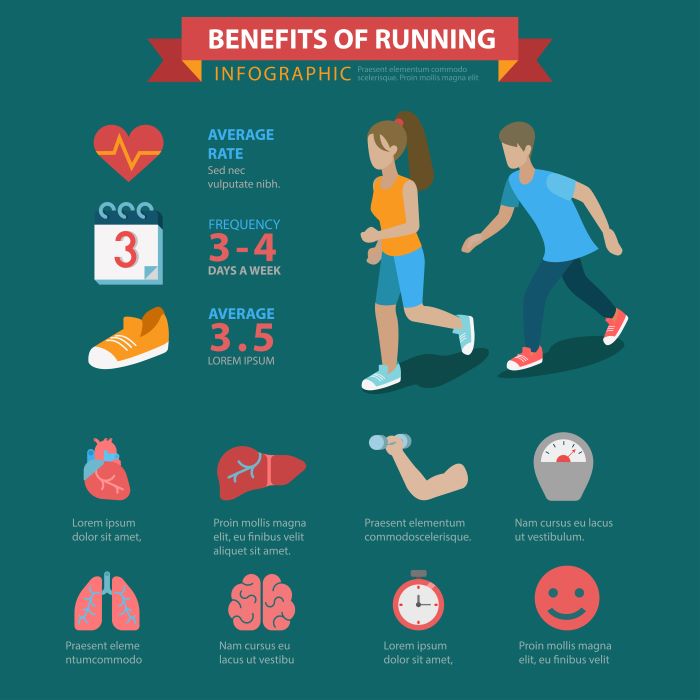To achieve peak performance in running, understanding VO2 max is crucial. VO2 max, or maximum oxygen uptake, refers to the maximum amount of oxygen your body can utilize during intense exercise. It is a key indicator of cardiovascular fitness and endurance, making it especially important for runners.
Measuring your VO2 max can provide valuable insights into your aerobic capacity. Enhanced VO2 max means your body can effectively deliver and utilize oxygen to your muscles, allowing you to run faster and longer without fatigue. This is particularly vital during races, where every second counts.
For runners, improving VO2 max not only enhances performance but also contributes to overall health. Here are some benefits:
- Increased Endurance: Higher VO2 max enables longer runs with less effort.
- Improved Speed: A higher capacity for oxygen leads to faster paces.
- Enhanced Recovery: Better oxygen delivery aids in quicker recovery post-runs.
Incorporating the right training strategies, such as interval training and hill workouts, can significantly boost your VO2 max. This is where tailored workouts become essential. Visit our website to learn more and get started today! Click here.
Key Factors That Influence VO2 Max Improvement

Improving your VO2 max is not solely about running harder; various factors play a significant role in enhancing this vital metric. Understanding these key elements can help you tailor your training for optimal results.
1. Genetics: Your genetic makeup influences your baseline VO2 max and how much you can improve it. Some individuals may naturally have a higher capacity for oxygen uptake, while others may need to work harder to see similar gains.
2. Training Intensity: The intensity of your workouts directly affects VO2 max improvement. Engaging in high-intensity interval training (HIIT) or tempo runs challenges your cardiovascular system, prompting adaptations that enhance oxygen utilization.
3. Duration of Training: Consistency is crucial. Regular, prolonged training sessions lead to physiological changes that increase VO2 max over time. Aim for a structured training plan that progressively increases your workload.
4. Altitude Training: Training at higher altitudes can also boost VO2 max. The lower oxygen levels at altitude force your body to adapt, improving its efficiency when you return to lower elevations.
5. Nutrition: A well-balanced diet rich in carbohydrates, proteins, and healthy fats supports energy levels and recovery, essential for effective training. Hydration plays a role as well; being well-hydrated enhances performance and recovery.
By addressing these factors, you can create a comprehensive approach to improving your VO2 max, allowing for significant gains in your running performance.
Best Running Workouts to Boost VO2 Max Effectively

To effectively enhance your VO2 max, integrating specific running workouts into your training regimen is essential. Here are some of the best running workouts that target VO2 max improvement:
1. Interval Training: This workout involves alternating between high-intensity bursts and recovery periods. For example, sprint for 30 seconds followed by jogging or walking for 1-2 minutes. Repeat this cycle for 20-30 minutes. This method increases your heart rate and stimulates adaptation.
2. Tempo Runs: Tempo runs help improve your lactate threshold, allowing you to maintain a faster pace for longer. Aim for a pace that is comfortably hard, running for 20-40 minutes without significant breaks. This steady effort pushes your aerobic capacity and enhances your VO2 max.
3. Fartlek Training: A Swedish term meaning ‘speed play,’ fartlek combines continuous running with intervals of varying speeds. For instance, alternate your pace between fast bursts and slower recovery jogs throughout your run. This fun and flexible workout boosts both speed and endurance.
4. Hill Repeats: Incorporating hill workouts into your routine can significantly enhance your VO2 max. Find a steep hill and sprint up for 20-30 seconds, then recover by jogging or walking back down. Repeat this for several sets. The incline intensifies the effort, leading to improved cardiovascular fitness.
5. Long Runs: While they may not seem intense, long runs build endurance and improve overall cardiovascular function. Aim for a distance that challenges you without overexerting. Gradually increase your long run distance to adapt your body and enhance your aerobic capacity.
By incorporating these workouts into your running schedule, you can effectively boost your VO2 max and elevate your fitness levels.
Integrating Interval Training for Maximum Results

Interval training stands out as a powerful tool for runners looking to maximize their fitness gains, particularly when aiming to boost VO2 max. This training method focuses on alternating periods of high-intensity effort with lower-intensity recovery, providing a challenging yet effective workout.
To successfully integrate interval training into your routine, consider the following steps:
- Establish Your Goals: Determine what you want to achieve with interval training. Whether it’s improving speed, endurance, or overall fitness, having a clear goal will help tailor your sessions.
- Choose Your Intervals: Common intervals range from 20 seconds to 5 minutes of intense effort, depending on your current fitness level. A typical structure might include 30 seconds of sprinting followed by 1-2 minutes of walking or slow jogging.
- Warm-Up and Cool Down: Always start with a proper warm-up of 10-15 minutes of easy running to prepare your body. Post-workout, ensure you cool down with light jogging or walking to aid recovery.
- Progress Gradually: As you become comfortable with your interval sessions, gradually increase the intensity or duration of your high-effort intervals. This progressive overload is essential for continuous improvement.
- Mix It Up: Incorporate variety into your interval training by changing the duration, intensity, and type of workout. For instance, alternate between flat sprints, hill repeats, and tempo intervals to keep your training dynamic and engaging.
Incorporating interval training not only elevates your VO2 max but also keeps your workouts exciting. As you challenge yourself with each session, you’ll find yourself enjoying the journey towards improved fitness!
Tips for Consistent Progress and Avoiding Plateaus

Achieving consistent progress in your running journey, particularly when aiming to increase your VO2 max, can sometimes be a challenge. It’s common for runners to hit a plateau, where improvements seem to stall. However, with the right strategies, you can maintain momentum and continue to see advancements in your fitness. Here are some effective tips:
- Track Your Workouts: Keep a detailed log of your runs, including distance, pace, and how you felt. This data provides valuable insights into your progress and helps identify patterns that may correlate with plateaus.
- Set Short-Term Goals: While long-term goals are essential, short-term, achievable goals can keep you motivated. Focus on improving your pace by a few seconds per mile or increasing your weekly mileage gradually.
- Incorporate Cross-Training: Engaging in different forms of exercise, such as cycling, swimming, or strength training, can enhance your overall fitness and prevent burnout from running alone. Cross-training helps to avoid overuse injuries while keeping your routine fresh.
- Prioritize Recovery: Overtraining can lead to stagnation. Ensure you have rest days and incorporate active recovery, such as yoga or light stretching, to allow your muscles to repair and grow stronger.
- Stay Mentally Engaged: The mental aspect of running is just as important as the physical. Try new trails, join a running group, or switch up your routes to keep your mind engaged. A fresh environment can re-ignite your passion for running.
By implementing these strategies, you can foster consistent progress and stay motivated in your running journey. Remember that each runner’s path is unique, and it’s essential to listen to your body while embracing the joy of running!
Creating a Sustainable Running Routine for VO2 Max Enhancement
Establishing a sustainable running routine is crucial for enhancing your VO2 max and achieving lasting fitness results. A well-structured plan not only helps you stay committed but also ensures that you enjoy your running journey. Here’s how to create a routine that works for you:
- Assess Your Current Fitness Level: Before diving into a new routine, evaluate your current fitness level. This will help you set realistic goals and determine the appropriate intensity and duration of your workouts.
- Plan Your Weekly Schedule: Consistency is key. Aim to run at least three to four times a week. Designate specific days for different types of runs, such as long runs, interval training, and recovery runs, to keep your routine varied and interesting.
- Listen to Your Body: Adaptability is vital. Pay attention to how your body responds to workouts. If you’re feeling fatigued, don’t hesitate to adjust your schedule or take an extra rest day. It’s important to strike a balance between pushing your limits and allowing for adequate recovery.
- Incorporate Variety: Mixing up your running routes and intensities can prevent boredom and keep you engaged. Try different terrains, such as trails or tracks, and vary your pace to challenge your body in new ways.
- Stay Accountable: Whether it’s joining a running group or sharing your goals with friends, having a support system can motivate you to stay on track. Participating in community events or challenges can also add excitement to your routine.
By following these steps, you can create a sustainable running routine that not only enhances your VO2 max but also makes running a joyful and integral part of your lifestyle. Visit our website to learn more and get started today! Click here.


